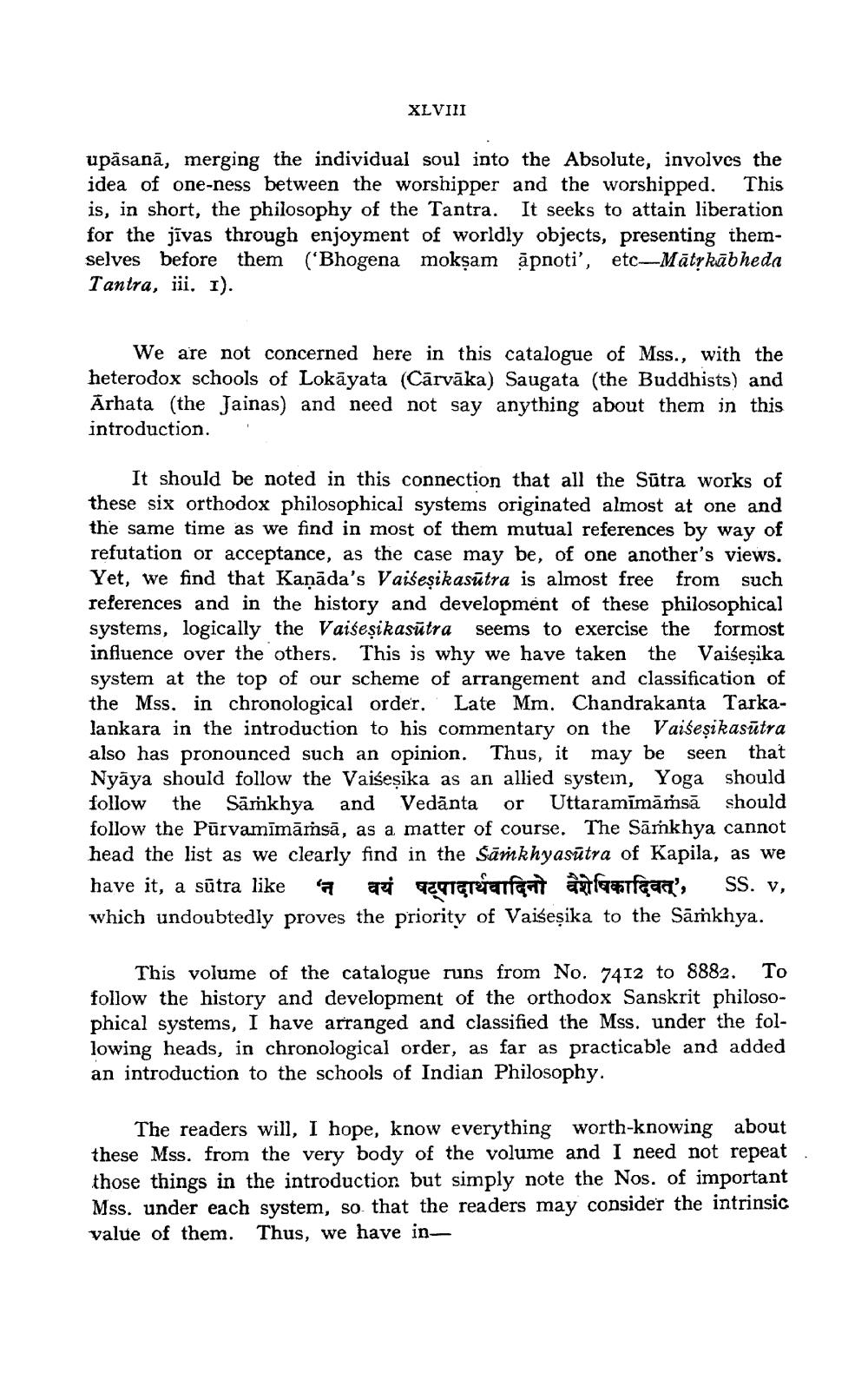________________
XLVIII
upāsanā, merging the individual soul into the Absolute, involves the idea of one-ness between the worshipper and the worshipped. This is, in short, the philosophy of the Tantra. It seeks to attain liberation for the jīvas through enjoyment of worldly objects, presenting themselves before them ('Bhogena mokşam „pnoti', etc-Mātykābheda Tantra, ji. I).
We are not concerned here in this catalogue of Mss., with the heterodox schools of Lokāyata (Cārvāka) Saugata (the Buddhists) and Ārhata (the Jainas) and need not say anything about them in this introduction. !
It should be noted in this connection that all the Sūtra works of these six orthodox philosophical systems originated almost at one and the same time as we find in most of them mutual references by way of refutation or acceptance, as the case may be, of one another's views. Yet, we find that Kanāda's Vaišesikasūtra is almost free from such references and in the history and development of these philosophical systems, logically the Vaiseșikasūtra seems to exercise the formost influence over the others. This is why we have taken the Vaišeşika system at the top of our scheme of arrangement and classification of the Mss. in chronological order. Late Mm. Chandrakanta Tarkalankara in the introduction to his commentary on the Vaiseșikasutra also has pronounced such an opinion. Thus, it may be seen that Nyāya should follow the Vaibesika as an allied system, Yoga should follow the Samkhya and Vedānta or Uttaramīmāṁsā should follow the Pūrvamīmāṁsā, as a matter of course. The Sāṁkhya cannot head the list as we clearly find in the Sārkhyasūtra of Kapila, as we have it, a sūtra like apoi agterrarrant a qurface', SS. v, which undoubtedly proves the priority of Vaiseșika to the Sāṁkhya.
This volume of the catalogue runs from No. 7412 to 8882. To follow the history and development of the orthodox Sanskrit philosophical systems, I have arranged and classified the Mss. under the following heads, in chronological order, as far as practicable and added an introduction to the schools of Indian Philosophy.
The readers will, I hope, know everything worth-knowing about these Mss. from the very body of the volume and I need not repeat those things in the introduction but simply note the Nos. of important Mss. under each system, so that the readers may consider the intrinsic value of them. Thus, we have in




